DIY Gluten-free Multi-grain Porridge Recipe
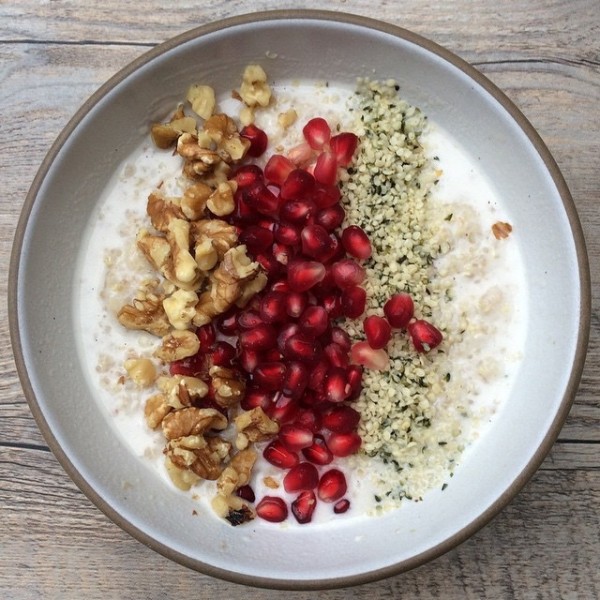
Breakfast is the most important meal of the day not only because it jumpstarts your brain and your metabolism, gives you fuel to get going, provides energy until your next meal, but it also sets the tone for how you feel and what you crave the rest of the day.
Hypothetically speaking, if I eat a doughnut for breakfast, my blood sugar will surge, then plummet, making me cranky and not able to think very clearly. I will be hungry a short while later, and psychologically other things can happen. That sugar may initiate more cravings for sweets during the day. I might be annoyed with myself for eating something “bad” and feel depressed afterwards. I could even think my whole day of eating has already been “ruined” and so I throw in the towel and eat a whole other bunch of crap, which we all know is a crazy thing to do, but it happens to the best of us.
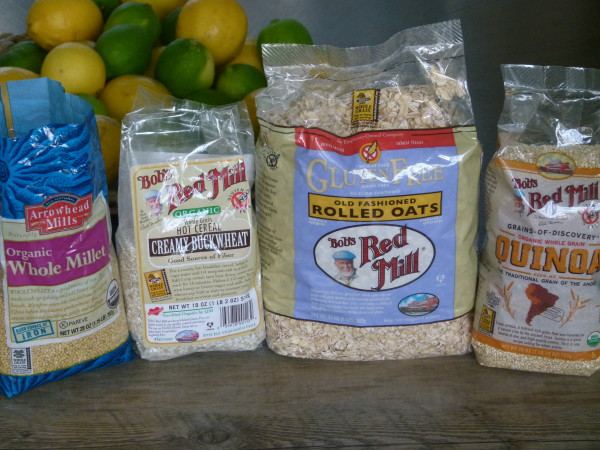
The key is to eat the right amount of the right combination of high quality protein, fats and complex carbohydrates at breakfast.
At least twice each week, I make a big pot of warm porridge, usually steel cut oats, but occasionally another grain or two. I set out a bunch of different jars on the counter so everyone can make their own “power bowl” with fresh or dried fruit, nuts or nut butter, seeds, coconut, granola, and the like.
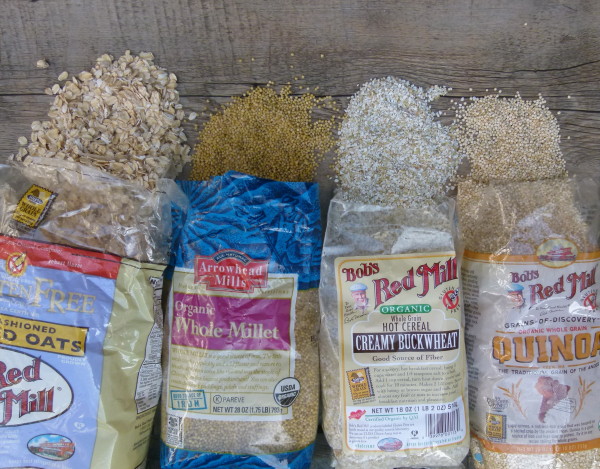
Last year I decided to change it up a bit and mix a bunch of different grains I had lying around and see what would happen. It’s always a good idea to expose yourself to more nutrients and flavors! I chose grains that all had similar cooking times — millet, quinoa, rolled oats and “creamy buckwheat cereal.” The buckwheat cereal is just the cut version of whole buckwheat groats, so it cooks faster. I loved it and so did my husband! My son, who doesn’t like to try anything new, thought it was “ok.” But he finished his bowl and eats it all every time I make it. (I think he secretly likes it.)
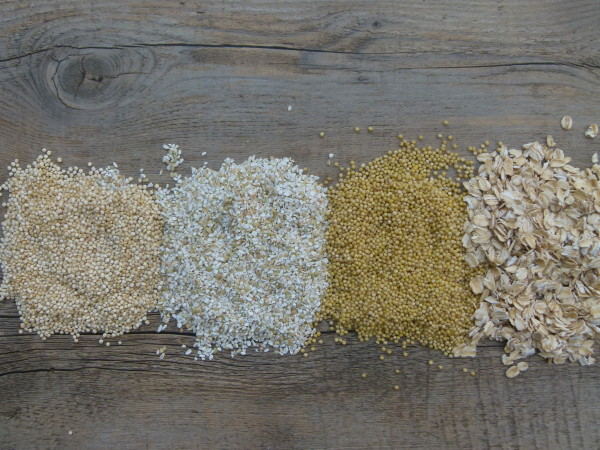
Many of my students have asked me for the “recipe” after seeing many a bowl of multigrain porridge on my Instagram feed. There’s really no one recipe for how to do this. I usually use 1 cup of mixed grains, so you can divide that equally into 1/4 cups of each of 4 grains. Or you can do mostly oats if that’s what is most familiar to you and a couple tablespoons of the other ones. (Mixing the grains makes for a more complex flavor than just one note.) I like to cook with water and when the grains are nice and soft and porridge-like, finish it off with something creamy like almond milk. If you are desperate to get more protein into your breakfast, you can certainly cook your grains with milk from the start.
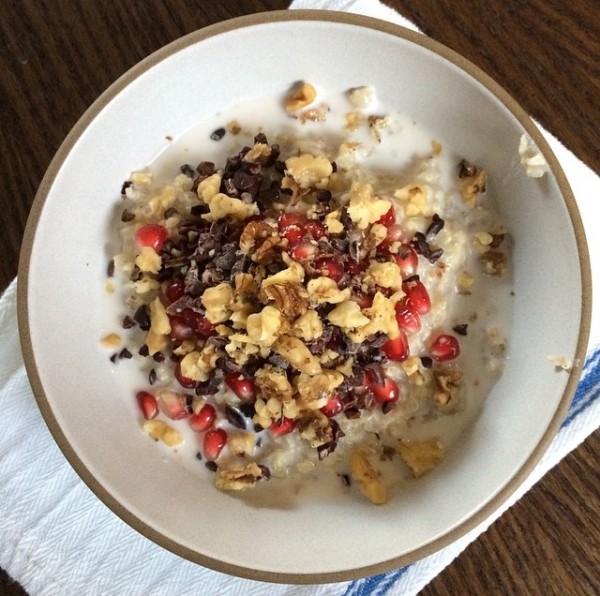
You can also use other grains like wheat berries (not GF), brown rice, spelt (not GF), barley (not GF) and steel cut oats, but keep in mind those take longer to cook even if you soak them the night before (which you should do — see this post for why.)
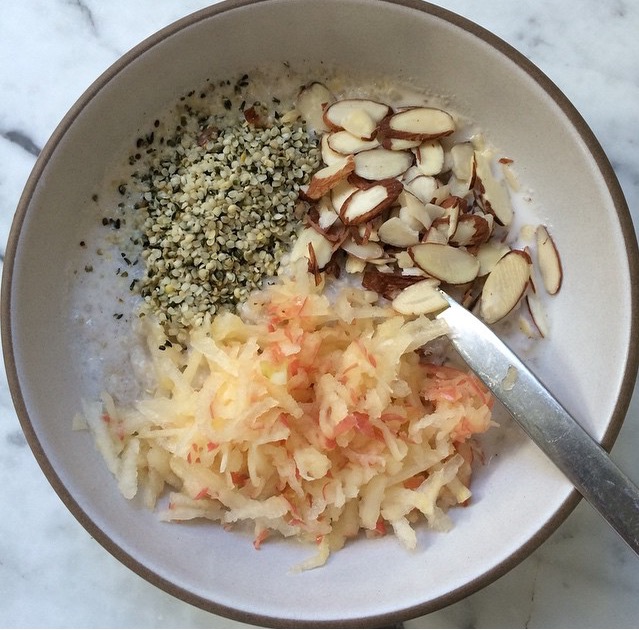
There are infinite possibilities for toppings or add-ins, but I have included a few images of my latest creations (sorry there are no images of the porridge in the pot — the steam fogged up my camera and the pictures were a mess!) and you can check this post on some of my favorite oatmeal concoctions. Make your next breakfast count!
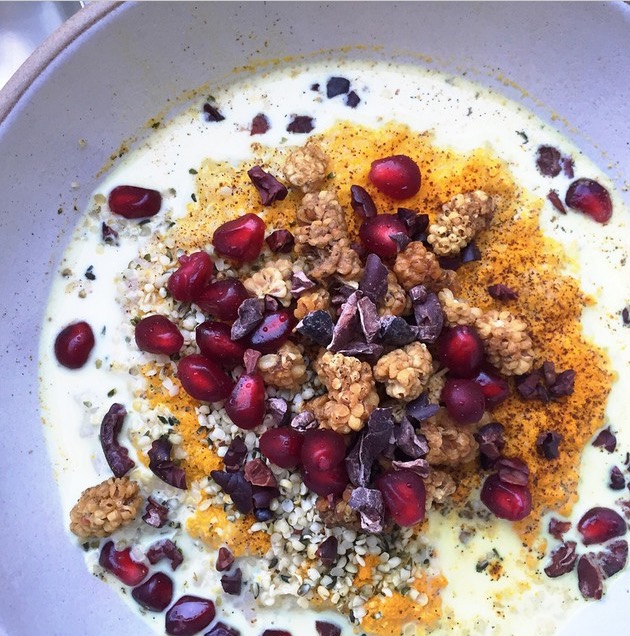
- 1 cup mixed gluten-free grains (I like a combination of rolled oats*, quinoa, millet, and creamy buckwheat), preferably soaked overnight in water and drained
- 4 cups water (use 3 ½ cups of water if grains were soaked)
- ½ - 1 cup unsweetened almond milk or milk of choice (click here for how to make your own almond milk)
- In a medium saucepan, combine the grains and water. Bring to a boil over high heat, reduce heat to a simmer and cook covered.
- Cook until all the grains are tender, about 25-30 minutes. If grains were previously soaked, they will cook much more quickly!
- Stir in the almond milk according to whether you like your porridge is thick or thin until porridge is nice and creamy. Serve immediately or refrigerate for a few days. Reheat in a saucepan with a little water or almond milk to desired consistency.


